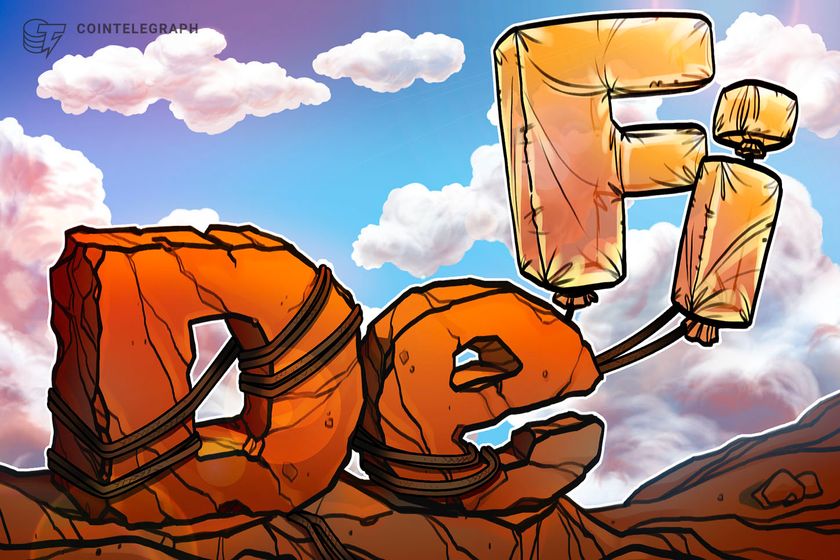Polygon CEO Urges DeFi to Move Beyond Hype and Focus on Sustainable Liquidity

Decentralized finance (DeFi) has long been a hotbed of innovation, but its reliance on short-term incentives and unsustainable liquidity models threatens its long-term viability. Polygon Labs CEO Marc Boiron recently called for a radical shift in how DeFi protocols approach liquidity, labeling the sector’s current challenges as “self-inflicted.” In an exclusive interview, Boiron outlined a vision for sustainable DeFi, emphasizing chain-owned liquidity and transparent economic models as the way forward.
The Problem with Mercenary Capital in DeFi
Boiron didn’t mince words when criticizing the current state of DeFi liquidity. He pointed to the widespread practice of offering sky-high annual percentage yields (APYs) through token emissions as a flawed strategy. “It’s just renting liquidity; it’s not real loyalty,” he told Cointelegraph. This approach, he argued, leads to fleeting liquidity that disappears the moment yields drop or token prices decline.
The consequences of this model are severe:
- Volatility: Sudden liquidity withdrawals destabilize protocols.
- Token Dilution: Excessive emissions erode token value.
- Institutional Hesitation: Traditional finance players avoid unreliable markets.
“Protocols can put their treasury to work, earning yield instead of diluting token value. Over time, this strengthens the treasury rather than just paying off temporary liquidity providers.”
Polygon’s Blueprint for Sustainable DeFi
Boiron presented Polygon’s POL token as a case study for sustainable liquidity. Unlike traditional yield farming, which relies on external incentives, Polygon’s approach focuses on chain-owned liquidity. Here’s how it works:
- Treasury-Backed Liquidity: Protocols build reserves to directly own liquidity positions.
- Fee Capture: Revenue from transactions and services funds the treasury.
- Long-Term Growth: Instead of chasing short-term gains, the focus shifts to sustainable expansion.
The trade-off? Time. Building a robust treasury requires patience and disciplined management. But the payoff is a more stable, resilient ecosystem.
Bridging DeFi and Traditional Finance
For traditional finance (TradFi) to fully embrace DeFi, liquidity must be predictable and stable. Boiron explained:
“Traditional finance runs on models that need stable, reliable market access. If a DeFi protocol suddenly loses liquidity or slippage spikes, it creates a level of risk most institutions just won’t take.”
Polygon’s solutions—sustainable treasury management, owned liquidity, and transparent models—aren’t just for institutions. “These are good financial fundamentals that work for any protocol,” Boiron emphasized.
The Road Ahead: A More Stable DeFi Ecosystem
Looking toward 2026, Boiron envisions a DeFi landscape with:
- Reduced Volatility: Fewer boom-bust cycles driven by mercenary capital.
- Stronger Governance: Community-driven decision-making replaces short-term speculation.
- Real-World Integration: Sophisticated financial products bridge DeFi and traditional assets.
He remains optimistic about regulatory frameworks like Europe’s Markets in Crypto-Assets Regulation (MiCA) and evolving U.S. guidelines. “We’re 12–18 months away from seeing a lot more institutional involvement,” he predicted.
Why Sustainable Economics Win in the Long Run
Boiron’s message to DeFi protocols is clear: prioritize long-term growth over short-term hype. While high APYs may attract quick liquidity, they rarely lead to lasting success. “Sustainable economics always win in the long run,” he said, pointing to surviving protocols from past cycles as proof.
POL, Polygon’s token, plays a key role in this vision. “POL doesn’t solve everything on its own,” Boiron admitted, “but it gives protocols the breathing room to tackle bigger challenges like user retention and capital inflows the right way.”
Conclusion: A Call to Action for DeFi Builders
The DeFi sector stands at a crossroads. Will it continue chasing unsustainable hype, or will it embrace models that ensure long-term viability? Boiron’s argument is compelling: chain-owned liquidity, transparent treasuries, and disciplined growth are the keys to a thriving ecosystem.
For developers and investors, the takeaway is clear: focus on fundamentals. The protocols that survive—and thrive—will be those that build for sustainability, not just short-term gains.
What’s your take on sustainable liquidity in DeFi? Share your thoughts and join the conversation.

